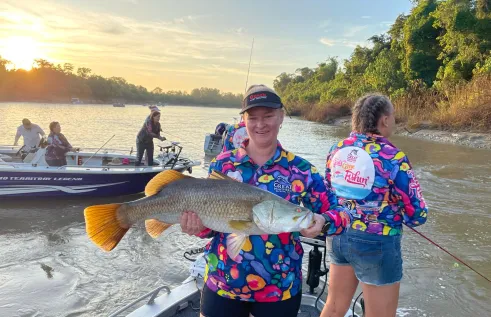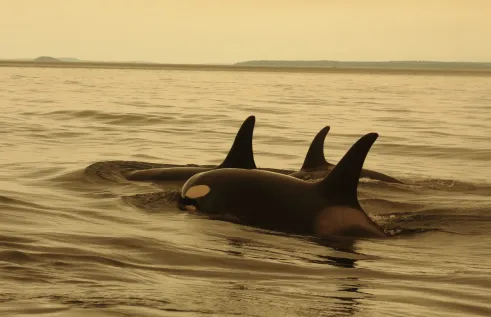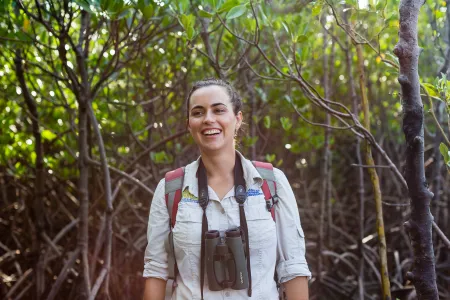News Article
NT bird numbers soar against global decline
Shorebird populations in Australia’s north appear to be on the increase, bucking a global trend, according to research by a Charles Darwin University PhD candidate.
Amanda Lilleyman has researched shorebirds in the Top End for more than eight years and has found that size may have a lot to do with survival.
“The populations of many species of shorebird that migrate within the East Asian-Australasian Flyway have declined rapidly,” she said.
“I wanted to improve knowledge of the habitat requirements of the shorebirds at a site in Northern Australia, Darwin Harbour, which is a terminus for some migrants and a staging post for others.”
From the Arctic, Siberia and China the birds follow the summer season in a figure eight pattern called the “flyway” to the southern hemisphere and new feeding grounds in Asia, Australia and New Zealand, with some finding a resting place on beaches surrounding Darwin.
“Migratory shorebirds have a fascinating ecology with some flying up to 11,000 km each year,” Amanda said. “This has significant physiological changes.”
To find out more Amanda tracked the birds and analysed trends in structural size and body mass across multiple sites in Australia.
“I found that both size and mass have been declining as the climate has warmed, and that individuals from the Darwin study site, in particular, were smaller and lighter than their equivalents elsewhere,” she said. “At the same time, the population of shorebirds visiting sites in Darwin has been on the increase, often in contrast to trends nationally and globally.”
She said the reasons for this smaller size could be adaptive.
“The smaller size may have reduced metabolic demand of shorebirds, allowing them to remain in less productive tropical habitats longer than they would normally do,” she said.
“A likely reason for the increase of shorebirds visiting Darwin is the creation of an industrial site that the shorebirds are using as an additional safe roost close to feeding grounds.”
She warned that while the figures appeared to buck the national and international trends, the birds relied on a seasonal network of sites for roosting and feeding as food availability changed, and that management of the network in its entirety was crucial.
“Before their return trip on the flyway, they need to increase their body fat and muscle mass by between 40 and 70% at feeding grounds,” she said.
“The responsibility for management of these migratory species is shared among the managers of the network of sites used by the birds in many political jurisdictions.
“Darwin Harbour needs to be managed as part of this network. While the addition of an extra roosting site appears to have increased harbour usage by the migratory shorebirds, a failure to manage the full network of feeding sites could reverse this trend,” she said.
Related Articles

Cotton trash to treasure: Project using waste to grow new mushroom industry
Supermarket shelves could be stocked with mushrooms grown from the Northern Territory’s cotton waste, with a Charles Darwin University research project exploring the possibility of broadening the region’s agricultural industry.
Read more about Cotton trash to treasure: Project using waste to grow new mushroom industry
Stereotypes holding back Australia’s recreational fishing future, new study finds
Outdated stereotypes about who a “real fisher” is could be costing Australia’s recreational fishing industry valuable talent, creativity, and growth, new research from Charles Darwin University suggests.
Read more about Stereotypes holding back Australia’s recreational fishing future, new study finds
Global body adopts policy to protect Earth’s old, wise and large animals
The International Union for Conservation of Nature (IUCN) has recognised Charles Darwin University-led research into the Earth’s oldest animals with the adoption of the ‘Longevity Conservation’ global policy principle.
Read more about Global body adopts policy to protect Earth’s old, wise and large animals
